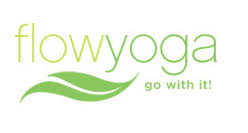Call it what you want – the “winter blues”, “post holiday-rush”, your “New Year Resolution pressure” – let’s be real, sometimes the “season of joy” can be anything but that. It’s the time of year when our routines succumb to our traveling demands. We become restricted by the amount of daylight, pick the holiday party over our workout, or simply don’t feel like leaving our warm bed. Just when we want to let our yoga practice takes the back-burner, now more than ever is when we should be making the small action of prioritizing our health. Here’s why:
1. Bust the Hustle
Despite what our shopping, holiday party, and traveling schedule may suggest – this isn’t the time to let your yoga practice slide. During the holidays, we often experience increased stress and tension, keeping us in “fight-or-flight” mode. Setting aside an hour for yourself to do yoga helps slow down the mind and body – activating our parasympathetic nervous system (our “rest-and-digest” mode). Adding some movement and mindfulness not only helps us beat the busyness and be fully present in the wonderful season, but makes getting back into a routine following the holidays a bit easier.
2. Escape the Chill
While I commend you for toughening out the snow and making time to run in 20-degree temperatures at night – how about thawing out your frozen muscles by letting us turn the heat up for you? A nice slow flow in the warmth is great for increased joint lubrication, sweat, improving range of motion, and mixing up your exercise routine, all while embracing your imaginary exotic beach trip in the toasty, 85 degree room.
3. Kick the Cold
The short days and decreased light during the winter leave us more likely to get sick. With less sun (decreased Vitamin D) – our immunity is suppressed, as well as our mood-boosting hormone, serotonin. Movement is key to making the mind and body happy. Less sick days, more joy – it’s a win-win.
4. Lift your Spirits
Forget about moving to compensate for the occasional overindulgence of holiday treats – but for your mood! Exercising can improve seasonal depression and improve mental health by lowering our stress hormone, cortisol. On top of a great workout, a 2013 study found listening to upbeat music significantly improves mood in the short and long term – and our teachers playlists don’t disappoint.
Whether you are feeling the post-holiday winter blues, or the rush of the season. Maybe you need a recovery day, or it could be time to challenge yourself. Do you need a de-stresser or an up-lifter? Yoga practices can be energizing or calming. The point of picking one or the other is to bring yourself into balance – check in and see what your body needs this winter.
— Amanda Presgraves
Amanda is a recent business graduate from Wake Forest University with her B.S. in Exercise Science from James Madison University. As Division I collegiate swimmer, life-long athlete, and entrepreneur – Amanda is an advocate of health and personal growth, on a constant pursuit to optimize life and inspire others through her commitment to healthy living. If you can’t find Amanda bouncing between projects, the gym, kitchen, her mat, or volunteering, you can find her online as she continues to lead and motivate others towards a happier and improved life through article contributions, newsletters and community motivation. (@amandapgraves, linkedin).
Image: a4gpa/Flickr via Creative Commons license 2.0





